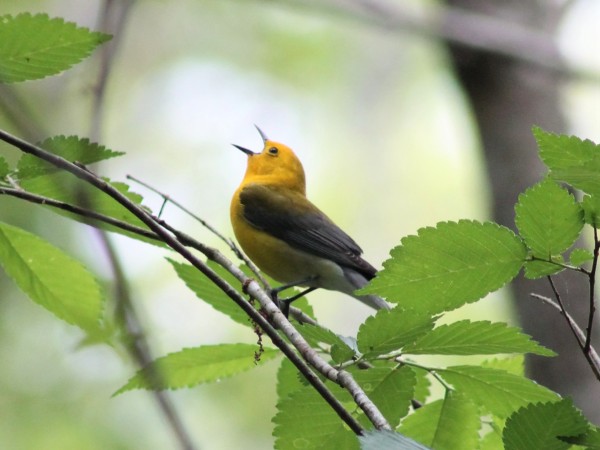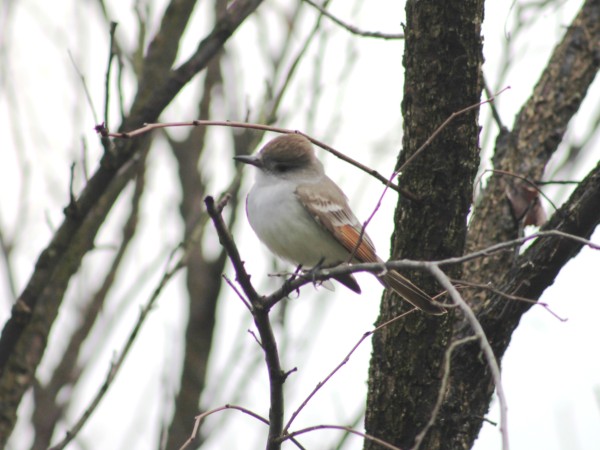2023 Spring Weather Forecasts & Migrating Songbirds Report 2
Dear Journey North Readers,
They say that if March comes in like a lion it will go out like a lamb. Well, apparently March 2023 didn’t get the memo because it came in like a lion and went out the same way! The parade of storm systems moving across the country continued, which meant migrating songbirds couldn’t make a lot of progress. Consequently, there hasn’t been much to report over the past week. Short periods of clear weather allowed a decent variety of birds to make it as far as Oklahoma, but not much farther. Those migrants included White-eyed, Red-eyed, and Yellow-throated Vireos, Black-and-white Warblers, Common Yellowthroats, Hooded Warblers, and Summer Tanagers. Here in Tennessee, I also saw my first Black-and-white Warblers and Common Yellowthroats, and reports of Prothonotary Warblers are increasing in the state (Fun Facts: Prothonotary Warblers get their name from the bright yellow robes Vatican clerks, who are known as prothonotaries, wear. They are also only one of two warblers that nest in tree cavities; the other is Lucy’s Warbler in the western US)). A few Yellow-throated Warblers made it to Maryland, and the first Purple Martins arrived in Ohio.
Out west, there was a nice influx of birds from the tropics, but like in the east, they didn’t get very far. In Arizona, birders reported many Yellow Warblers, along with the first Scott’s Orioles and Bell’s Vireos. In California, the bird of the week was Hooded Oriole, with numerous sightings of that species. There were also the first arrivals of the Ash-throated Flycatcher, Black-headed Grosbeak, and White-throated Swift.
So will migration continue to crawl this week, or might there be a change? Looking at the weather map, there is yet another storm system making its way across the country. As with the past couple of weeks, the bad weather will keep migrants grounded for a few days. Once the high pressure behind the front has moved east, then winds will shift to the south and migrants will have good flying weather again. Out west, it looks like everyone is getting a break from the atmospheric river of storms. It looks like they will have good weather for the entire next week, so migrants should be able to make a lot of progress.
Weather forecasting, and hence migration forecasting, can sometimes be tricky, with seasonal weather changes and weather phenomena like El Niño and La Niña. Adding to the difficulty is climate change, which may alter weather patterns in ways we don’t fully understand. There is a nice article written by Elizabeth Gamillo for Smithsonian Magazine titled, Bird Migration Patterns Are Changing—and Climate Change May Be to Blame (November 12, 2021) on how climate change may affect migration. In the meantime, get out and enjoy the birds!
Take care,
David Aborn
University of Tennessee at Chattanooga
submitted 04/05/2023







